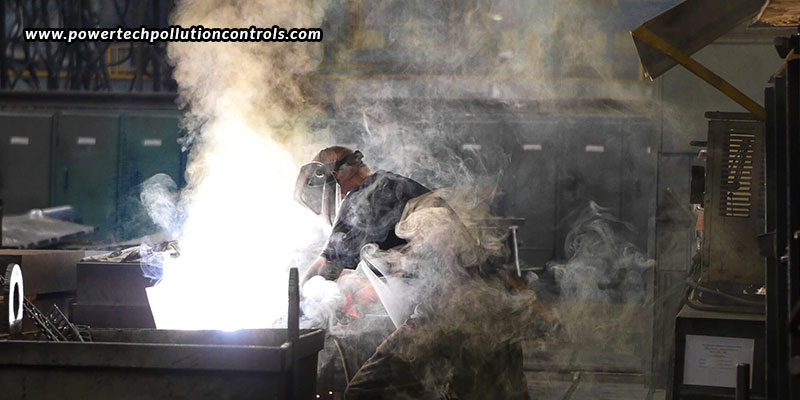Welding fume is among the greatest risks that welders face, as it poses lots of health issues, even as dangerous as cancer! The WHO’s International Agency for Research on Cancer classified it as carcinogenic to humans, underlining that welding fume protection deserves utmost attention.

What harmful components are contained in welding fume?
Welding fumes are a mixture of gases and particles that are generated during welding; the most harmful ones being iron oxide, titanium oxide, magnesium oxide, aluminium oxide, fluorides, carbon monoxide, nitrogen oxide, copper oxide, lead oxide, nickel oxide, and beryllium oxide. Iron oxide, titanium oxide, magnesium oxide, and aluminium oxide are harmful to the lungs and respiratory tract. And, others like carbon monoxide, nitrogen oxide, copper oxide, lead oxide, and fluorides are highly toxic in nature.
How do these harmful components prove fatal?
All the harmful particles in the welding fumes are absolutely small in size, which allows them to penetrate deep into the lungs. This slow deposit goes unnoticed in the beginning, but as time passes, health problems become apparent over the years. Or, it may even take decades for the symptoms to show up, but by the time, the issue becomes quite treacherous. The symptoms can begin as mild headache, nausea, and fever, but they slowly develop into much dangerous ones over time as the welders are exposed to high concentrations of welding fume particles over a longer span of time. Unprotected long exposure to these harmful substances can cause chronic respiratory tract infections, lung diseases, nervous system damage, and even cancer of various body parts!
What factors influence these harmful substances?
Several factors influence the volume of hazardous substances present in welding fumes, which include the main material, filler metals in the rod and wire electrode, and the shielding gas. The welding method used and the processes involved also have a significant influence on the harmful substances in the welding fumes. For instance, manual arc welding and MIG/MAG welding processes generate more fumes than TIG welding. And, the lowest health risk is associated with automated welding processes that are carried out in suitably equipped welding cells by robots.
How can welding fume danger be controlled?
Anti-glare helmets are the basic thing every welder must possess. Further, employing the Cold Metal Transfer process can also reduce the risk posed by welding fumes, as this welding process is characterized by very low heat input and low amounts of welding spatter; thus reduced welding fumes. Another most significant way to reduce health-related risks is by installing a welding fume extractor within the welding premises.
What is a welding fume extractor?
A welding fume extractor is a filtration system that captures and controls the harmful particles in the welding fume, eliminating them, and bringing in clean air into the premises for the workers to breathe in. For instance, Powertech Pollution Controls’ Fumekiller is a high-efficiency two-stage electrostatic precipitator that is designed and developed for the capture and control of fumes, mist, smoke, and fine dust. The equipment contains an electrostatic filter that sucks in the particles in the welding fume, which first enter the pre-filter where large particles are removed, after which the small particles are pushed in the electrostatic module. Here, these particles receive a high positive charge between a series of parallel aluminium plates, after which they’re made to pass through another series of plates that are negatively charged. Hence, these positively charged particles get attracted to the negatively charged plates, and stick to them, while being adhered even after the filter is turned off. The clean air is then set out through the outlet into the premises. This particular welding fume extractor can be used in a wide range of applications including welding, induction hardening, oil quenching, wire drawing, annealing, dip tinning, soldering, rubber curing, die casting, and many others.
For more information, visit: https://www.powertechpollutioncontrols.com/